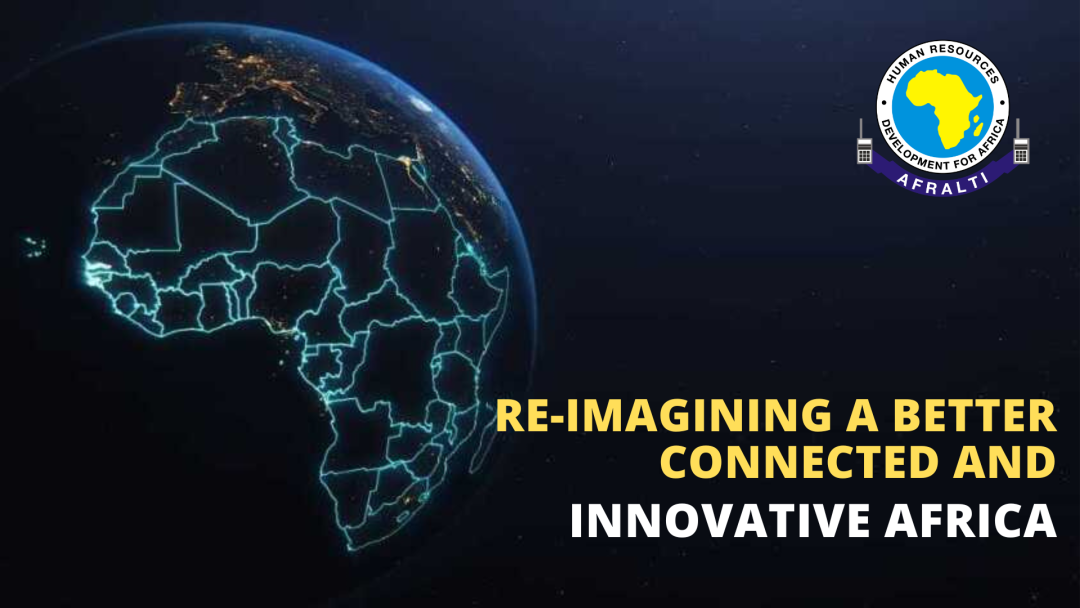
Re-imagining a Better Connected and Innovative Africa
Africa, home to more than 1.2 billion people, harbours the great potential that can yield inclusive growth and eradicate poverty based on its human and natural resources – at least according to the world bank. To realise an inclusive growth, the continent should make it intentional to get connected now more than ever. Looking at the global projections from the United Nations (UN), Sub-Saharan Africa is envisioned to host more than 1 billion people, half of whom will be 25 years old by 2050. With such a young population – youngest in the world actually – a strategic approach ought to be adopted to ensure that the intention to deliver universal connectivity encompasses opportunity to advance digital innovation. It is clear that across the globe and in alignment with the Sustainable Development Goals (SDGs), advancing digital innovation means creation of more descent jobs.
Statistics from the International Telecommunications Union (ITU) and the African Telecommunications Union (ATU), however, present a worrying scenario. For example, looking at the ITU’s Global Connectivity Report 2022, as Doreen Bogdan-Martin, currently the ITU Secretary General, celebrates in the preface section that the Internet has become a key part of our societies and that the majority have became the minority, she also notes that a full one-third of humanity is totally offline and that many among the online populations are not “meaningfully connected.” Most of these numbers – the ones offline and the ones lacking “meaningful connection” are in Africa with only an average of 40% of the population using the Internet – the lowest in the world. Further, as at 2022, only 23% of the rural dwellers in Africa were using the Internet. It should be noted that majority of countries in Africa have the largest populations living in the rural areas. ATU, on the other hand, has expressed similar concerns while citing a report from Broadband Commission which shows that 17 million people in Ethiopia have no access to mobile broadband. More of such statistics are also presented in the GSMA’s Mobile Internet Connectivity report of 2022.
With such foregoing publications, it is clear that multiple digital divides exist within and among most countries in Africa – particularly in Sub-Saharan Africa. As such, the subject of digital innovation is far from scratching the surface in the many countries. Internet is the lifeblood of digital innovation and without it, majority of the young population in Sub-Saharan is denied an opportunity, not only to innovate, but also to access the knowledge and skills that can shift their mindset and enable them to innovate. The opportunity of a connected continent, albeit, cannot be overemphasised. Enough evidence already exists going by the recent significant economic developments and startup growth that have taken place in Kenya, South Africa, Nigeria, Egypt, Morocco among other African countries.
These far-ranging impacts of Internet access empowered by remarkable forms of communication, entertainment, expression and collaboration are yet to create an awakening of a shared vision to enable African countries conduct contextual research and developments that uniformly advances digital innovation. While countries such as Kenya, have gone ahead to develop pre-blueprints on optimal spectrum allocation in order to address connectivity needs for the underserved, other countries are yet to enact any new frameworks of spectrum innovation to reach the unserved. Moreover, there is no existing research or assessment initiatives to allow innovations such as IoT to thrive.
Hence, the African Advanced Level Telecommunications Institute (AFRALTI) is launching a new initiative dubbed “Re-imagining a Better Connected and Innovative Africa.” As an inter-governmental institution with various member countries in Africa, AFRALTI, has noted that there exists a “missing Link” premised on collaboration that can rapidly contribute to addressing the existing coverage and usage gaps, achieving universal and meaningful connectivity and leapfrogging developments on emerging technology trends such as the Internet of Things (IoT), Data Science and Artificial Intelligence (AI). The initiative is being launched in tandem with the envisaged ICT landscape postulated by the ATU focused on the following pillars: Infrastructure and Connectivity, Broadband, Digital Services and Cybersecurity. In the near future, AFRALTI will publish the full blueprint to set the stage for new projects and collaborative activities within these pillars.




